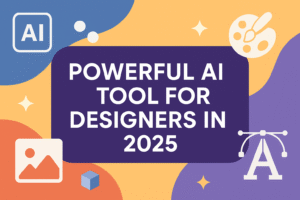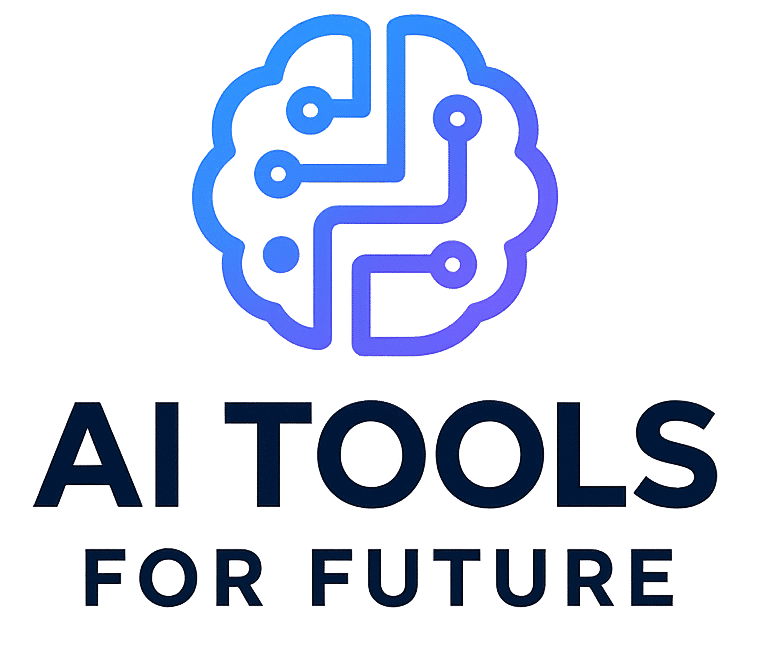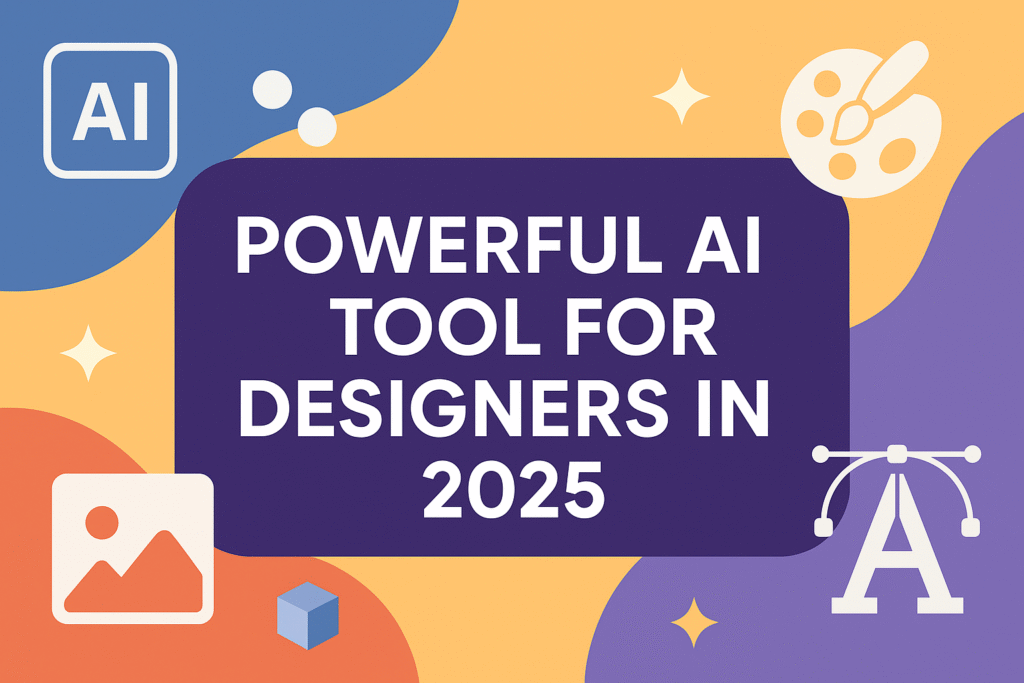Discover how an AI tool for designers can streamline graphic design and speed creativity.
Introduction

Design tools have come a long way—from analogue sketches to robust digital platforms that have redefined creativity. In 2025, the creative workflow is undergoing its biggest transformation yet, thanks to artificial intelligence. An AI tool for designers doesn’t just speed up technical tasks; it fundamentally augments your creative process, making your visions easier—and faster—to realize.
Why Designers Need AI in 2025
Today’s design world demands lightning-fast turnarounds and visually stunning results across countless platforms. Designers, whether working solo or in teams, face persistent challenges: manually repeating tedious elements, racing the clock against tight deadlines, and hitting creative blocks when inspiration dips.
An AI tool for designers provides real solutions by automating mundane tasks, smartly organising complex projects, and even offering creative nudges—these platforms allow you to focus on what truly matters: ideation and innovation. In 2025, using AI isn’t just a luxury; it’s essential for staying competitive and consistently producing high-impact design work.
Key Features of a Powerful AI Tool for Designers
The best AI tool for designers in 2025 revolutionises the workbench with a suite of intelligent features:
-
AI-Driven Auto-Layouts: Instantly arrange elements on a canvas based on best practices for balance and aesthetics.
-
Smart Image Enhancements: Use machine learning to upscale, retouch, or recolor photos—with results rivaling professional manual edits.
-
Color Palette Suggestions: Generate harmonious palettes instantly from moodboards, reference images, or even brand guidelines.
-
Generative Design: Let algorithms propose layouts, patterns, or variations based on your input, saving hours of exploration.
-
Real-Time Collaboration: Work side-by-side with other designers or stakeholders, receiving instant AI feedback that refines drafts on the fly.
-
AI-Powered Branding Kits: Auto-generate logos, icons, and full brand assets that adhere to unified style parameters.
Each feature is designed not just to save time, but to expand creative possibilities. By automating repetitive chores and offering insightful suggestions, an AI tool for designers ignites both productivity and innovation in every project.
Best Use Cases for Designers
Modern AI tools empower designers across many practical scenarios:
-
Creating eye-catching social media graphics in minutes.
-
Producing UI/UX mockups that update dynamically with user feedback.
-
Designing professional-grade presentations or pitch decks with branded consistency.
-
Rapidly generating packaging concepts or marketing collateral for campaigns.
Whether you’re a freelancer managing multiple clients, an agency scaling creative output, or an in-house team tackling brand needs, these applications streamline workflow and enhance final results.
Conclusion
AI tools are reshaping the future of design in 2025. Blending intelligent automation with creative flexibility, an AI tool for designers can transform your workflow, helping you deliver results faster and smarter. Now is the time to explore and adopt these cutting-edge platforms—and unlock a new era of creativity and efficiency.
Certainly! Here’s an SEO-friendly FAQ section for your blog post “Powerful AI Tool for Designers in 2025”, using the focus keyword AI tool for designers:
AI Tool for Marketers in 2025
https://aitoolsforfuture.com/ai-tool-for-marketers/
FAQ: Powerful AI Tool for Designers in 2025
1. What is an AI tool for designers?
An AI tool for designers is a software platform that uses artificial intelligence and machine learning to automate design tasks, generate creative suggestions, and enhance the overall design process. These tools can help with layout, image editing, branding, and more, allowing designers to work faster and more creatively.
2. How can an AI tool for designers improve my workflow?
An AI tool for designers can streamline repetitive tasks like resizing, color matching, and formatting, while also providing instant feedback and design recommendations. This means you can spend more time focusing on creative decisions rather than manual adjustments, significantly boosting your productivity.
3. What features should I look for in a powerful AI tool for designers?
Key features to look for include smart auto-layouts, generative design, real-time collaboration, AI-powered image enhancements, and brand asset generation tools. These features ensure your designs are both visually impactful and created in less time.
4. Are AI design tools suitable for both agencies and freelancers?
Yes, an AI tool for designers is perfect for freelancers, agencies, and in-house design teams. Freelancers benefit from faster client turnarounds, agencies can handle higher workloads, and in-house teams ensure consistent brand quality with unified, AI-powered assets.
5. Will an AI tool for designers replace human creativity?
No, AI tools are designed to augment—not replace—human creativity. They help with technical tasks and offer creative ideas, but the ultimate vision, direction, and creative decisions are always in the hands of the designer.
6. Are AI design tools difficult to use?
Most modern AI design tools are built with user-friendly interfaces, making it easy for beginners and professionals alike to adopt them. Many offer guided tutorials, drag-and-drop functionality, and intuitive dashboards to simplify your workflow.
7. Can an AI tool for designers handle branding and logo creation?
Absolutely. Many AI tools now feature intelligent branding kits and logo generators that follow specific style rules, ensuring consistent and professional brand assets every time.
Have more questions about finding the best AI tool for designers? Leave a comment or reach out—we’re here to help!



